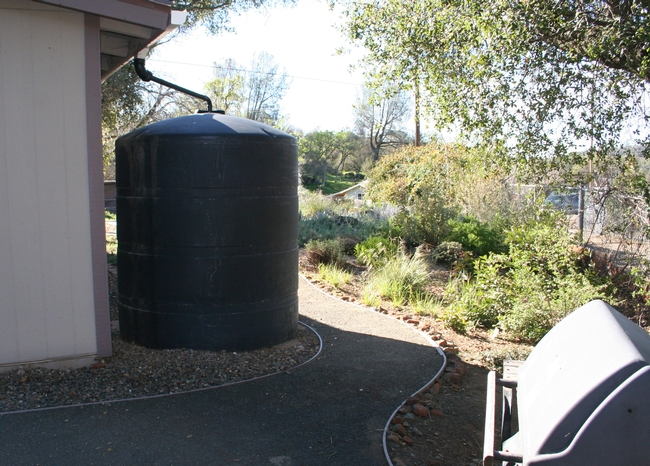Five-foot zone free of plants can help rural homes’ fire survival
Few people think about creating the non-combustible zone, said UC ANR Cooperative Extension advisor Yana Valachovic, because they are so accustomed to foundation plantings. “Plants are used to anchor the house visually on the landscape. Without them, a house can look naked,” Valachovic said.
But the non-combustible space adjoining the house may be the difference between losing it and all the contents to a wildfire versus returning to the property with the home unscathed. This extra precaution can be important, Valachovic explains, because, “embers from a distant wildfire can land on or adjacent to your house and ignite combustible items.”
In the five-foot non-combustible zone, even such common items as firewood, deck furniture, a wooden ladder, brooms and other wooden tools should be absent during the fire season.
Rock mulch, decorative stone “hardscape,” and concrete paths can be aesthetically pleasing alternatives.
“We have to simplify our landscapes and accept less vegetation to improve fire safety,” Valachovic said.
UC Agriculture and Natural Resources is involved in fire research and education statewide, helping enhance understanding of fire's role in human communities and natural areas. A range of UC ANR publications and online tools address wildfire risk, fuels impacts of forest diseases and home wildfire mitigation. UC ANR is part of the California Fire Science Consortium, a network of fire science researchers, managers, and outreach specialists tasked with improving the availability and understanding of fire science and management knowledge.
Valachovic, the UC ANR forestry advisor in Humboldt and Del Norte counties, recently hosted a webinar (recording available online) for homeowners in areas at wildfire risk, during which she said a five-foot non-combustible zone around the home increases the likelihood of home fire survival and provides several additional benefits to rural homeowners.
“If you have five feet of non-combustible area immediately next to the house, you don't have to cut back plants for siding maintenance and there's ample space for placement of a ladder to clean the gutters,” she said. “The open space also provides access for cleaning up any accumulation of pine needles and leaf litter, also a significant fire risk.”
Ten years ago, California extended the defensible space rule from 30 feet to 100. The area within 30 feet of the home should be maintained in a way authorities call “lean, green and clean.” Dry grass, leaves, brush and dead wood should be cleared. Open areas should be left between islands of vegetation in the 30-foot-zone to disrupt the path of a fire to the home. Trees within six feet of the house should be cut back or removed entirely.
Beyond 30 feet, in the extended 100-foot reduced fuel zone, fire officials ask that landowners remove dead wood, debris and low tree branches. Small trees and plants growing under trees should be removed, as they act as ladders giving ground fires access to tree crowns.
Valachovic said “fire resistant” plants can be characterized as having low growth, open structures, not holding on to dead leaves and having leaves with high moisture content. But she said no vegetation is truly fire safe.
“Landscape maintenance is essential,” Valachovic said. “All plants can burn under the right conditions.”
An initiative to maintain and enhance healthy families and communities is part of the UC Division of Agriculture and Natural Resources Strategic Vision 2025.


